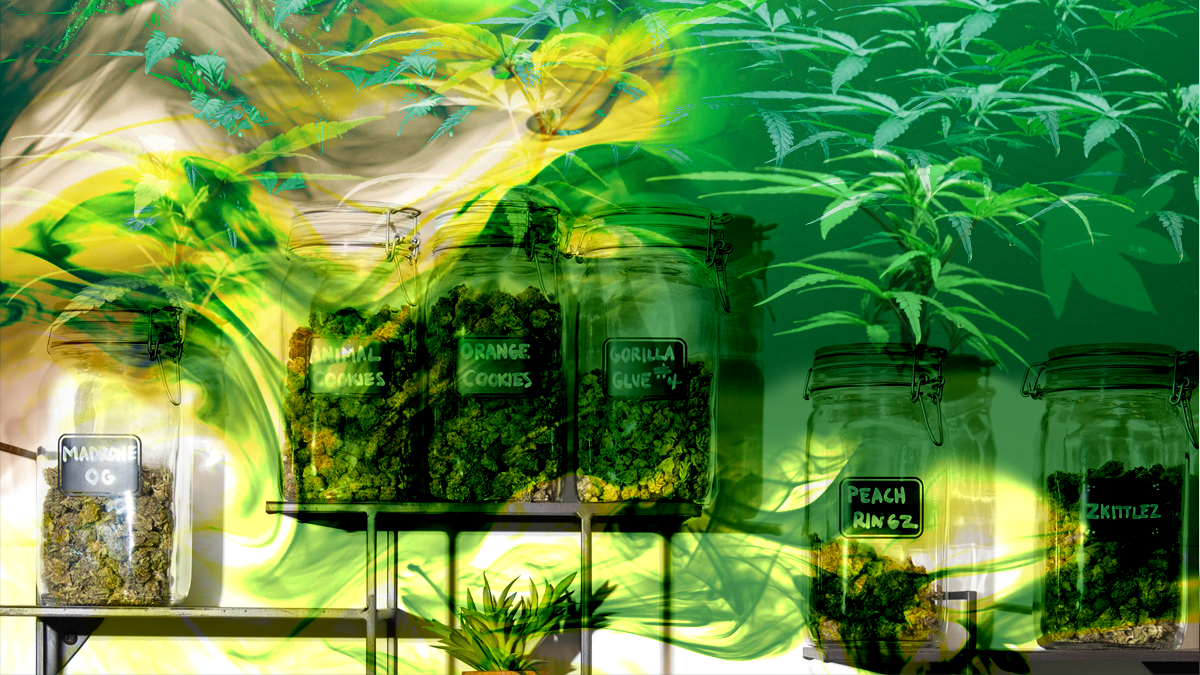Growing cannabis in northern Oregon can be tough, especially when it comes to harvest season. Portland's climate is a mixed bag for outdoor growers. On one hand, we have hot dry summers. On the other hand, autumn comes on quickly and brings with it cold, damp days when the sun doesn't stay out long enough to dry the dew off your plants, putting them at risk of mold. For the last three years, WW has grown cannabis on the roof of our office in our attempt to take full advantage of the 2015 legislation. This year has been tough. Long story short, we lost all plants that we started with.
Now that we are entering harvest season, our only successful plant, Dogwalker, is caught in a common Portland predicament: The plant still has a couple of weeks before it's fully in bloom and ready to harvest, but with the wet weather, Dogwalker is in a climate where it doesn't belong. All we can do is keep it covered, warm and hope that bud rot doesn't ruin our harvest.
This is one of the areas where the pros separate themselves from the amateurs.
Toby Feuer, a local grower for Five Zero Trees, recommends light deprivation as the best way to ensure a smooth harvest season. Essentially, he tricks the plant into thinking that summer is ending early by giving it less sunlight in the mid-summer.
"Naturally, your plants start flowering in August," Feuer tells us. "But in Oregon, you want to use light deprivation to get your plants flowering early. This is a way to ensure that you beat the rains that come in late September."
The big problem with light deprivation? If you didn't start this process three months ago, you're out of luck.
But there are some things you can do.
Feuer advises to "gut" your plant. Gutting involves removing the lower leaves of the plant. This helps allow more energy to go toward the buds and, most importantly, helps create airflow to keep your plant as dry as possible.
Another step to help keep you from this nightmare of uncertainty is to pay close attention to your plant's grow cycle. Starting count from day one can help you know when harvest time is coming near.
Knowing what week your plant is on can save you the headache of taking educated guesses as to when your plant is ready to cut.
Harvesting at the right time is crucial when it comes to growing cannabis. If you harvest too early, you will have premature buds which leads to a poor product and a smaller yield. Harvest too late and the potency of your weed takes a steep decline or turns to rot.
We spoke with Stoney Girl, who is affiliated with Portlandsterdam University, a premier cannabis training center. She verifies that it is crucial to harvest your buds on time. If you're late, Stoney Girl says "the THC starts to degrade into CBN…[which leads to] a more sedative high."
So how do you know when it's time to harvest?
The telltale sign of harvest-ready weed is when the hairs of the plant, or pistils, have fully darkened and curled in. If your buds are looking thick and dense, but there are still some straight white pistils, it's not time yet.
However, opinions on harvest time vary. Stoney Girl recommends pulling your buds when the pistils are still transitioning to their new color.
"Forty percent is the peak. At that time, you'll get the peak of what your strain is producing," she said.
Feuer's recommendation was a bit later in the budding process.
"The most reliable way to tell if your plant is ready to harvest is with a microscope or a good quality close-up photo," Feuer says. "You want to look at the trichome heads to see when they go from clear to amber. The second way, if you only have the naked eye, is to see when 80 percent of the hairs have gone from white to red."
Maybe you prefer one way or the other, maybe it's somewhere in between. Many believe that the bud has different effects depending on when you harvest. On the roof of WW, our pistils are about 50 percent transitioned and we are looking to harvest sooner rather than later, for fear of bud rot.
